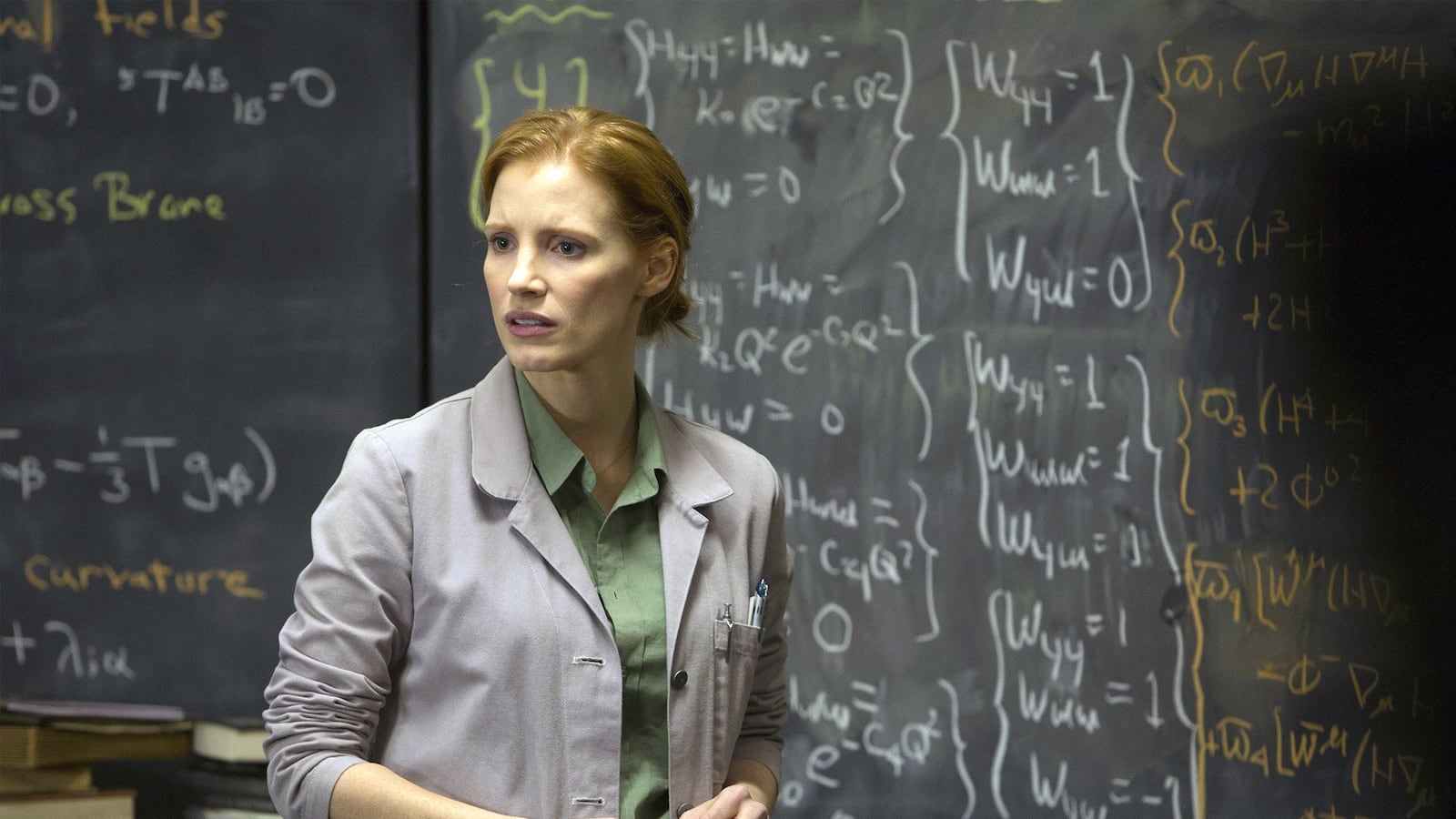Have you seen Christopher Nolan’s Interstellar yet? Did all the talk of gravity, relativity, space, time, wormholes, and love fascinate or frustrate you?
If so, you have Kip Thorne to thank.
Thorne is an esteemed astrophysicist, formerly based at Caltech, who’s made something of a name for himself in film and TV: He’s now an executive producer and scientific consultant on one of the most hotly anticipated and Oscar-bait-y releases of the season.
His scientific contributions—guiding the filmmakers through the nitty gritty of “the warped side of the universe” —created the technical backbone for the script. All those layers of mathematical scribblings on the chalkboards and whiteboards seen in the film—that’s all Kip. He also got to play coach to stars like Matthew McConaughey, Jessica Chastain, Anne Hathaway, and Michael Caine. (Nolan even told Caine that his character was patterned after Thorne.)
Now, Thorne is out with a new diagram-heavy, 300-page book detailing how he shaped the science that powers the movie.
Not bad for a 74-year-old physics nerd.
“[Anne Hathaway] amazed me,” Thorne tells The Daily Beast. “She characterized herself as something of a physics geek, and she was asking questions I never expected to be asked by anybody who was not pretty deep into physics. She wanted to know whether there is any observational or experimental evidence for quantum gravity, for example.” (Thorne says their initial conversation later branched off into shooting the breeze on jazz, family, and general scientific inspiration.)
Thorne also worked closely with Double Negative, the visual-effects aces who worked on Interstellar. Here’s a drawing, which Thorne provided to The Daily Beast, that he used as part of his explanation about how to compute the black hole images in the movie:

As with any major release loaded with scientific detail (in Interstellar’s case, it’s a story of brave astronauts traveling through a wormhole and trying to colonize another planet because mankind has forever wrecked Earth), the film has taken some hits from scientists on the lookout for inconsistencies and plot holes. “What’s Wrong With the Science of Interstellar?” Mother Jones magazine asked, in a conversation with astrobiologist David Grinspoon. “A lot of the critical details in the plot were a mishmash of ideas that made no sense,” astronomer Phil Plait wrote at Slate. “And the science. Oh dear. The science.” Neil deGrasse Tyson weighed in on what the epic film got wrong and right.
Obviously, Interstellar is a movie, not a three-hour advanced course in astrophysics. There are parts of the film where “the science had to be compromised in order to make a great movie,” Thorne says. (Nolan has acknowledged this, as well.) With regards to visuals, light, size of the wormhole, and so forth, strict scientific accuracy took a backseat to good storytelling.
When asked for a response to the criticism, Thorne chuckles. “I have thick skin—I’ve been around the block a few times,” he says.
As coincidence would have it, Interstellar was released on the same Friday as The Theory of Everything, the Stephen Hawking biopic. The renowned theoretical physicist has for years been a proponent of real-life, NASA-led interstellar travel. “It is important for the human race to spread out into space for the survival of the species,” Hawking said in 2006. “Life on Earth is at the ever-increasing risk of being wiped out by a disaster, such as sudden global warming, nuclear war, a genetically engineered virus, or other dangers we have not yet thought of.” And it just so happens that Thorne and Hawking have been close friends for decades.
“He and I went to the London premiere together, ” Thorne says. “My wife couldn’t go, so I took him as my date in place of my wife… We didn’t [spend much] time discussing the movie… but he seemed to enjoy it.”
Neither of them are convinced that the interstellar travel of Christopher and Jonathan Nolan’s imagination can happen in the real world. The laws of physics probably forbid wormholes from existing anyway, according to Thorne. But the two of them are enthusiastic supporters of getting the human race to far-off stars.
“Stephen is an advocate of pushing hard to get into space, and to carry the human race into space, and ultimately beyond our solar system, and so am I,” Thorne says. “If you think that the distance from the Earth to the nearest planet where we could live comfortably… is being, like, from New York to Australia… what we’ve achieved so far, in going to the moon, that’s about two-and-a-half inches. So that’s the challenge. I don’t think it’s a challenge that we have a prayer of actually succeeding at in the next century. But it is a challenge that we should be building up to ultimately doing. We should be pressing farther into space. We should be devoting further resources to spreading out into our solar system… That is the future of the human race.”





